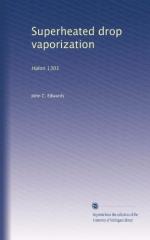|
This section contains 453 words (approx. 2 pages at 300 words per page) |

|
Chlorofluorocarbons (CFCs), once described as "miracle chemicals," cause the breakdown of the ozone layer that protects the earth from the sun's ultraviolet (UV) radiation. CFCs have no significant natural sources. They were first manufactured in the 1930s, and industries soon found a wide variety of applications for them due to their chemical unreactivity and heat-absorbing properties. CFCs have been used as refrigerants in air conditioners and refrigerators, in aerosol spray cans, in manufacturing foams as industrial solvents, and as cleaning agents in the manufacture of electronics. One U.S. chemical industry gave them the trade name of "Freons," and the term has since become a household word.
Chemically, CFCs are a subset of the more general class of compounds known as halocarbons (carbon- and halogen-containing compounds). CFCs are halocarbons that contain only the elements carbon, chlorine, and fluorine. The most common CFCs are small molecules containing...
|
This section contains 453 words (approx. 2 pages at 300 words per page) |

|


